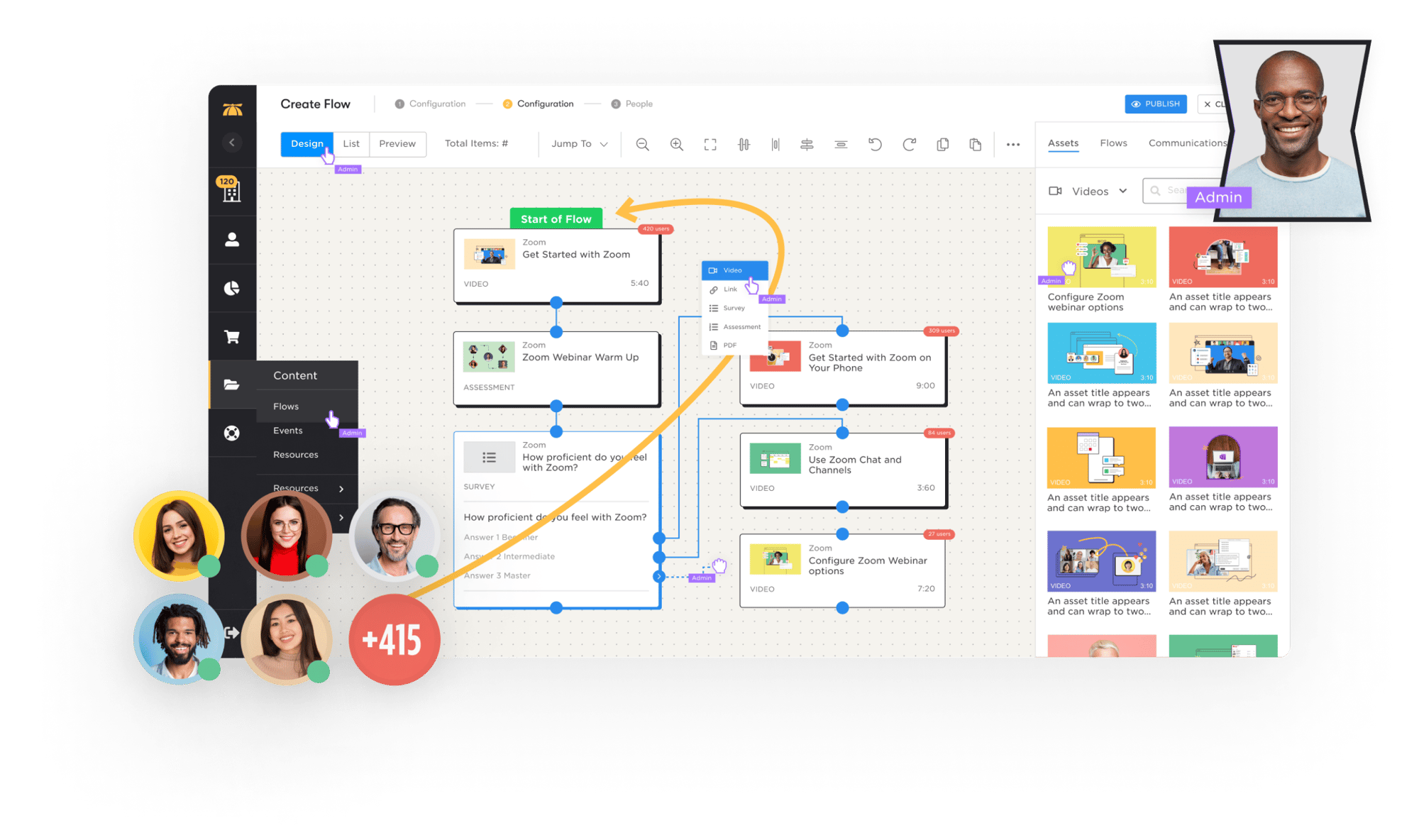If you’re like me, you periodically come across terms like “workflow learning” or “drip training” in the L&D community and wonder if they’re just a new buzzword or if they’re worth investigating.
The answer?
Both.
Workflow learning is a dynamic and practical approach to learning that is integrated into the work process itself. It emphasizes just-in-time, on-the-job learning, helping employees acquire the knowledge and skills they need when they need them.
The key features of workflow learning include:
- Just-in-Time Learning: Employees receive information and training exactly when they need it to solve a problem or complete a task.
- On-the-Job Learning: Learning takes place within the context of the job, with employees applying newly acquired knowledge immediately.
- Informal Learning: Learning often occurs through interactions, conversations, and real-world problem-solving, rather than structured courses.
- Self-Directed Learning: Employees take control of their own learning, seeking out information and resources as needed.
So, while workflow learning may indeed be the new buzzword making a splash as new conference tracks, podcast episodes, and professional development trainings, it’s definitely not a novel concept.
Watered down to its essence, workflow learning is teaching people about the things they are already doing, while they’re doing them. Because that’s when they care most, and they’ll remember best.
Workflow learning has its bearings in the long-standing concepts of the learner’s situational interest and personal interest.
Situational interest: Temporary interest that arises spontaneously due to environmental factors such as task instructions or an engaging text.
Personal interest: Interest in information or an experience based on the personal needs, wants, desires, or pains of an individual.
It's been proven many times that people learn and retain content best when they have a personal interest in the topic. Makes sense, right? People learn the best when they care the most.
But, our own personal interests don’t always align with the learning outcomes placed before us (by our employer, educator, … or even parent.)
So, creating situational interest is key.
And that’s exactly what workflow learning does.
By engaging and teaching learners based on their current situational interests, you’re able to find a way to connect to their personal interests.
For example, on Day 1 or 2 of a new job, most employees are so overwhelmed by new information that they’ll remember very little about things like – where to submit a ticket to support, or how to use their benefits portal. But, they’ll really wish they remembered when an app stops working or they need to submit an insurance claim.
What if you could detect those moments of need and teach employees what they need to know, exactly when they need to know it?
Sounds nice, but also impossible – right?
With hundreds or thousands of employees, you simply can’t know when those needs and opportunities arise for users. You’re missing opportunities to capitalize on situational interest and personal interest left and right. This means you’re being asked the same questions over and over again – a frustrating experience for everyone.
But – if you could wait to train users until they really wanted – and needed – the information, their retention of that information skyrockets.
You need a way to strike while the iron’s hot.
“The opportunity of a lifetime must be seized within the lifetime of the opportunity.” (Leonard Ravenhill)
So, let’s get started.
Start small by setting up triggers that automatically send learning assets to your learners – exactly when they need them via a free trial on the BrainStorm platform.

BrainStorm helps with workflow learning by automatically curating content for learners based on actions they take, searches they make, or characteristics of their role.
See it for yourself as you set up a small trial of users, select existing learning content, and then choose which behavior to detect and trigger learning assignments from.
Where next?
Request a trial
Learn more
Subscribe to our blog
Follow us on Linkedin
Schedule a demo
Conclusion
Workflow learning is a critical approach to learning and development that empowers employees to acquire the skills and knowledge they need as they work. By embracing this methodology, your organization can improve productivity, enhance adaptability, and boost employee engagement.
Remember that workflow learning is an ongoing process, and it requires a commitment to fostering a culture of continuous learning within your organization and leveraging the right tools for the job. When implemented effectively, workflow learning can be a true game-changer for your organization's success in closing skill gaps and improving employee outcomes.


